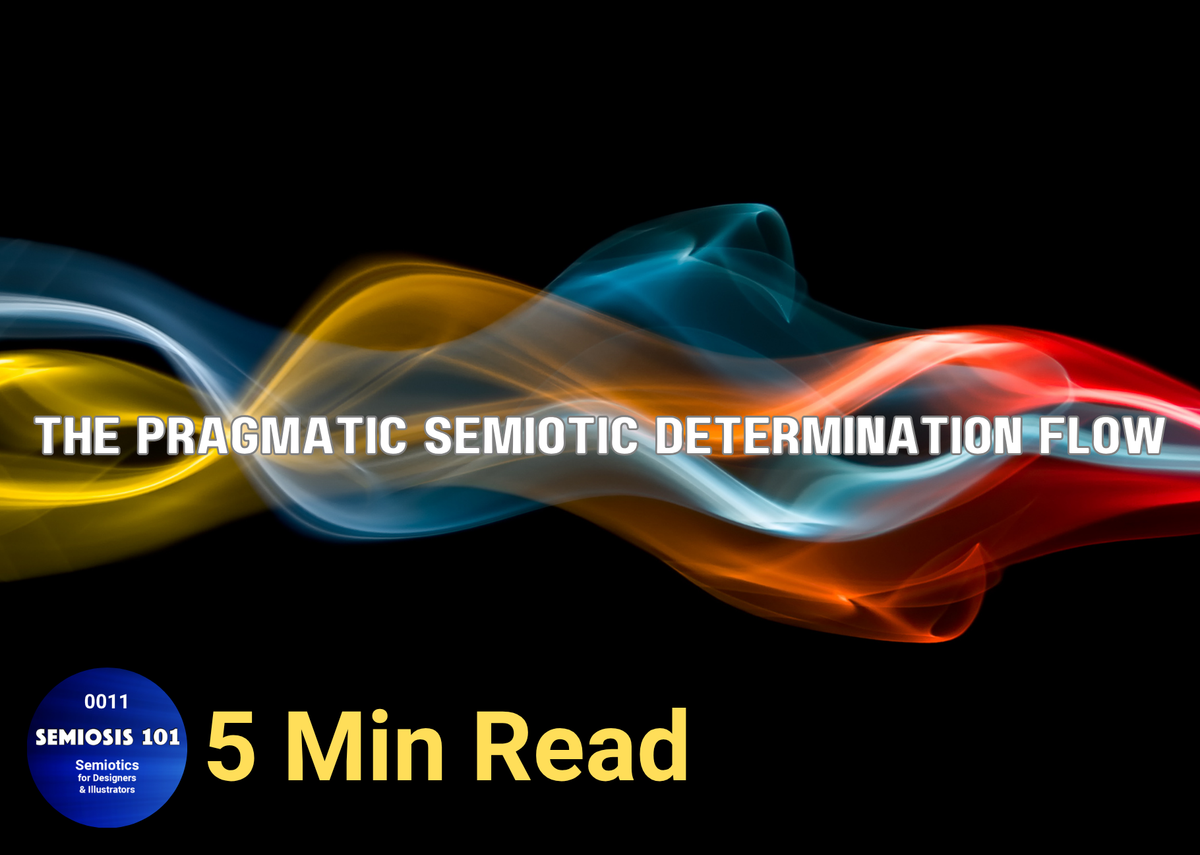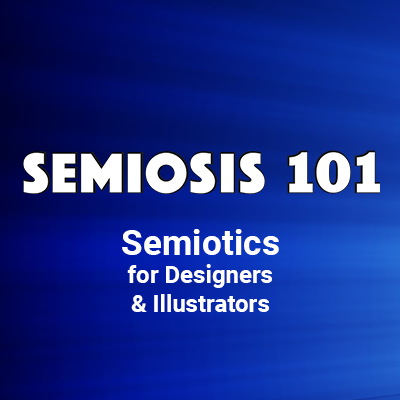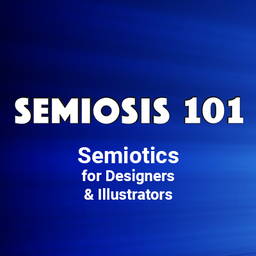BLOG 11: The Pragmatic Semiotic Determination Flow

Semiosis 101 - 5 minute semiotic read
Semiosis - sign-action - takes the audience’s subjectiveness and helps you creatives to manipulate your visual language from the level of lines, shapes, colours, marks, etc. up to full design and illustration outcomes. This begins at the basic level of Iconic representation of representing qualities (Iconicity). Semiotically, what do I mean by that?
At a micro level, the visual language you designers and illustrators choose (your aesthetic, so to speak) creates a visual mood, a vibe, a tone, a feeling to convey an intended message. If these mood-making lines, shapes, colours, marks did not resonate and make a connection with the target audience (if they failed to hook their attention), then all the visual communication
fails. If the target audience didn't make that immediate subconscious connection through the visual language to trigger their interest, they walk away. You have lost them.
To paraphrase Professor Tony Jappy in his excellent book Introduction to Peircean Visual Semiotics, Iconic representation of a [concept] is the lowest subclass that can operate as a [semiotic] sign, and only when it has a referring [concept] to be interpreted. You will see from the square brackets I’ve annotated Jappy’s quote with more creative-centric terms, which replace Peirce’s original obtuse terminology. That is what Semiosis 101 is here for.
For Iconic representation to begin to work semiotically, it has got to be related to the intended “message,” the concept the client needs to be visually communicated to their desired target audience. In Semiosis, Peirce defines a semiotic determination flow between three important factors.
To keep the explanation of Peirce’s determination flow accessible to designers and illustrators, I will first personalise these three semiotic factors at a macro level as people. Then I will turn to the micro level to explain the determination flow within the decision-making creative level.
At a very basic level we are discussing a concept to be communicated. Then how that concept is represented affects how it is interpreted. If this is well crafted then the interpretation leads back to the intended concept, and not a miscommunication. Therefore, at an anthropomorphic macro level we can say the semiotic determination flow moves between the client, through the creative, to the audience.
If semiotically successful the audience will interpret the correct meaning from the piece of design or illustration that the client intended. Let’s now remove the anthropomorphic elements from the determination flow and begin to explain it at the micro level of semiotic sign-action.
From the illustration above we have three factors: the concept to be visually communicated. How that concept’s representation can be visually communicated through the choice of visual language to shape the aesthetic. This representation in turn affects how the aesthetic will be interpreted. The aim is to manipulate the interpretations to lead back to the concept.
Peirce uses the term “Object,” while I substitute “concept.” For representation Peirce uses the term “Representamen,” and he uses “Interpretant” while I substitute it with “interpretation.” This sign-action is a continuous phenomenon. We are just starting with the first iteration through the determination flow.
Iconic representation is the very basic building blocks of all Visual Communication Design. Without the visual semiotic HOOK-ing of the attention of the target audience, any design or illustration intending to visually communicate its intended concept’s message, would be lost in the ocean of visual noise that competes for the audience’s attention.
This is where well-crafted Iconic representations aligned with referencing the audience’s existent experiences, can enhance the effectiveness of any piece of visual communication.
Iconically, the audience begins to subconsciously see shapes and colours and lines forming things they understand - at a basic, visceral level.
This is how creatives can hook the audience’s attention over the deafening visual noise - by aligning the micro level of meaning-making to specific and familiar qualities and resemblances that will trigger their curiosity. I discuss Iconic representation at length in Semiosis 101 YouTube episodes and in my 2026 Semiotics for Designers and Illustrators book.





